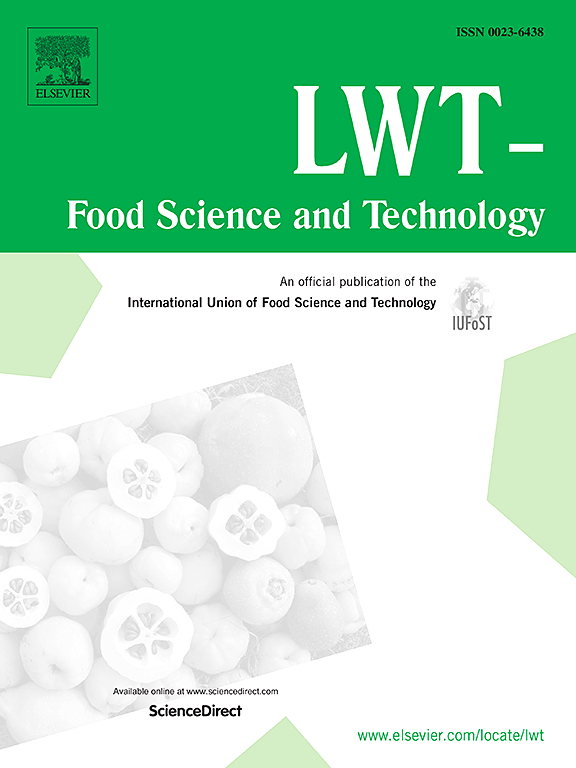Encapsulating volatiles: The role of emulsion stability on the retention of d-limonene during emulsification and spray drying
IF 6
1区 农林科学
Q1 FOOD SCIENCE & TECHNOLOGY
引用次数: 0
Abstract
Emulsion stability is widely regarded as an important factor for effective encapsulation. However, its role in retaining volatile compounds throughout different stages of the encapsulation process remains unclear. This study investigated the encapsulation of an essential oil model system (sunflower oil containing d-limonene) through emulsification followed by spray drying. It focused on understanding the impact of emulsion stability on d-limonene retention during these stages, paying special attention to surface oil formation. Four formulations were prepared by varying the content of initial solids (20 and 40 wt%) and pea protein isolate (0.9 and 3.0 wt%). Results showed that protein content primarily influenced emulsion stability during emulsification, while solids content affected stability during the spray-drying stage. Notably, emulsion stability itself had a limited impact on d-limonene retention. Loss occurred at all stages, but the most significant losses (2.06–11.63 %) occurred during spray drying and were closely associated to particle properties, specifically the amount of surface oil per surface area of particle (mSO per SA). The formulation containing higher solids and protein resulted in the lowest mSO per SA (1.81 ± 0.04 g/m2) and the highest d-limonene retention (97.00 ± 0.42 %). Rapid solidification due to increased initial solid content and the effects on morphology development due to higher protein content minimized d-limonene loss. These findings revealed that particle properties, rather than emulsion stability, became the dominant factor in determining d-limonene retention. This study offers valuable guidelines for optimizing the spray-drying encapsulation process of volatiles in various food applications.
求助全文
约1分钟内获得全文
求助全文
来源期刊

LWT - Food Science and Technology
工程技术-食品科技
CiteScore
11.80
自引率
6.70%
发文量
1724
审稿时长
65 days
期刊介绍:
LWT - Food Science and Technology is an international journal that publishes innovative papers in the fields of food chemistry, biochemistry, microbiology, technology and nutrition. The work described should be innovative either in the approach or in the methods used. The significance of the results either for the science community or for the food industry must also be specified. Contributions written in English are welcomed in the form of review articles, short reviews, research papers, and research notes. Papers featuring animal trials and cell cultures are outside the scope of the journal and will not be considered for publication.
 求助内容:
求助内容: 应助结果提醒方式:
应助结果提醒方式:


